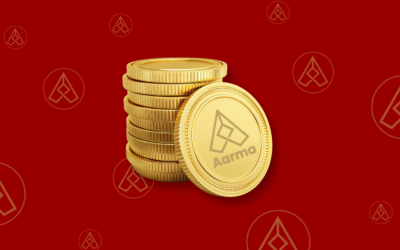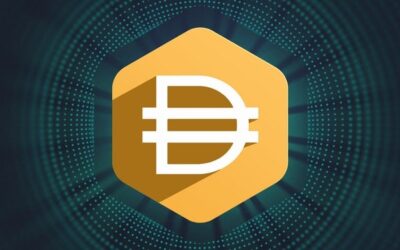What is Bitcoin?
A Bitcoin is a decentralized cryptocurrency, a digital version of money that operates without the involvement of the government or banks.
Characteristic features of Bitcoin
- Exists in the form of a digital currency
Bitcoins are not present in the form of physical notes or coins. It’s a digital currency because its existence depends on a set of codes that determine how it operates. This makes its use very handy and easy to carry on phones.
- Decentralized
Bitcoins are decentralized which means it doesn’t have a single controller or authority but rather a public record of transactions that can be stored by anyone on their computer. The coins can be exchanged between users on the peer-to-peer Bitcoin directly, without the involvement of intermediaries.
- Transparency and Opaqueness
Every transaction made in the bitcoin ecosystem is clearly visible to everyone. The size of the transaction and which user made it, as well as the receiver of the bitcoins is visible to everyone on the ledger board.
However, how many bitcoins are owned by a person cannot be known. People who contain Bitcoins in the system remain anonymous; i.e., there is no account of any names, numbers or any other identifying features that can connect the bitcoin to its owners.
- Speed of transfer
Bitcoin is one of the fastest methods of transaction in the world. Money can be sent from one end of the world to the other end in just a matter of minutes if sent in the form of bitcoin. However, a transaction through banks or any other method could take up to a week if not more.
- Demand determines value
There’s no fixed value or price of bitcoin. It fluctuates and is dependent upon the demand. The cost and value in the market are determined entirely by the members of the bitcoin ecosystem.
- Easy to set-up
Opening a bank account may require a large number of documents, lengthy procedures, and many legal papers for identification purposes whereas a bitcoin account can be opened in seconds without the need for any legal documents.
History of Bitcoin
Bitcoin as an entity was first introduced to the world by a pseudonymous person named Satoshi Nakamoto on October 31, 2008. This was the time when the world was at the depth of a financial crisis. It was just a message by Nakamoto that popped up on a cryptography mailing list termed, Bitcoin P2P e-cash paper.” It contained a link to a white paper called Bitcoin: A Peer-to-Peer Electronic Cash System.” In those papers, Nakamoto explained the concept of Bitcoin as a decentralized, digital currency. Eventually, the first block called the genesis block was mined and the blockchain was launched on January 3, 2009. The first test transaction was carried out about a week after the launch. For the first few months, the coin could be obtained only by the miners who validated the Bitcoin blockchain. The first economic transaction over bitcoin took place on May 22, 2010, when a Florida man decided to negotiate two pizzas (worth $25) for 10,000 bitcoins. The initial real-world value of bitcoin at 4 bitcoins per penny was established by that pizza transaction. Let’s hope that the pizza was delicious because if that man had held onto those coins, it’s worth would have been more than 100 million dollars today. In honor of that historical moment, cryptocurrency fans and supporters celebrate May 22 as Pizza Day.
Bitcoin Mining
Bitcoins are mined. That doesn’t mean it’s taken from the ground or a mountain like gold or copper. Bitcoin mining refers to the process by which bitcoins are released into circulation. Bitcoin miners are the people who solve computational problems or puzzles on a blockchain. The puzzles are considered to be very complex to solve and a bitcoin is earned by solving one such puzzle. The miners also process transactions on the blockchain. They are motivated to mine bitcoins due to rewards and transaction fees paid to them in bitcoins.
Price Index
Bitcoin investors have had a roller coaster ride over all these years. There have been massive price changes in the value of cryptocurrencies and the first such instance occurred on February 2011 when the price of bitcoin crossed $1. Shortly in a period of three months, the price skyrocketed to $32 in June which was followed by a sudden recession in the crypto market when the price declined to $2 in November 2011. Almost 2 years later in April 2013, the bitcoin price bubbled to $220. The graph went unstable with sharp increases and declines until the price reached $1000 at the beginning of 2015 and then again crashed to $315 by the year-end. The largest price bubble happened in mid-2017 when the price went up to $10,000 and around $19,650 by December 2017. By 2019, the price had again fallen dramatically. It was not until the pandemic that led to the economic shutdown which boosted the bitcoin price once again. The year started with the price at $7,200 and went up to $24,000 by December 2020. January 2021 saw a new record price of $40,000. Currently, as of April 2021, the price is $63,165.
Conclusion
The evolution of bitcoins over the years has triggered a debate about its future with other cryptos. Its success since its launch has inspired the creation of many alternatives such as Ethereum, Binance, link etc. From as low as a few cents in 2010 to the all-time high price record in 2021, Bitcoin has come a long way and continues to dominate the cryptocurrency markets.



![Mehracki [MKI]](https://www.cryptosparta.com/wp-content/uploads/2022/08/png_20220807_162858_0000-400x250.png)


0 Comments